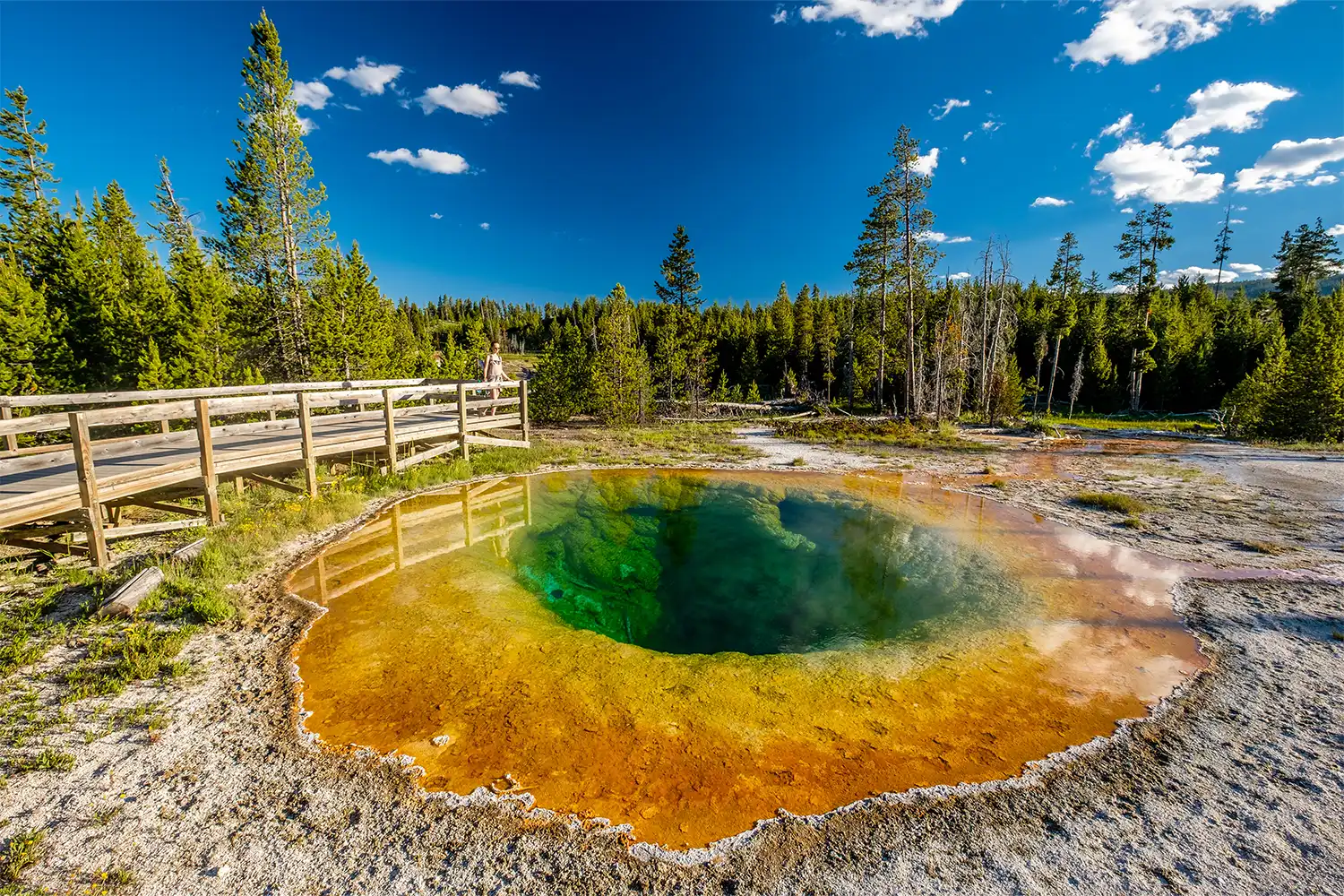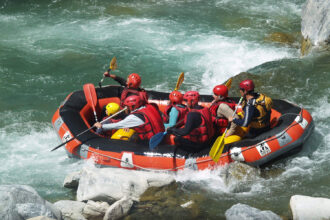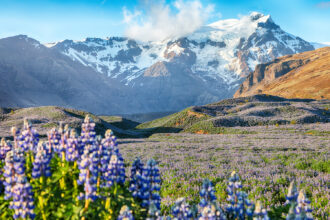Discover the top 9 UNESCO World Heritage Sites in the U.S., from natural wonders like Yellowstone and the Grand Canyon to historic landmarks like Independence Hall.
Top 9 World Heritage Sites in the US
The United States has some of the most spectacular landscapes, historical landmarks, and cultural marvels. Over the years, many have been recognized as UNESCO World Heritage Sites for their outstanding universal value and importance to humanity. They provide a glimpse into the history, culture, and natural beauty of the country. Ancient ruins and modern architectural wonders together reflect the world’s best offerings, nature and human creativity. Here is the list of top nine US World Heritage Sites in the United States that hold unparalleled beauty and cultural significance:
1. Yellowstone National Park
Location: Wyoming, Montana, and Idaho
Designated as: 1978
The world’s first national park is Yellowstone, which must be a part of any UNESCO World Heritage Site itinerary. It crosses part of three states and is the world’s pride in geothermal features, of which the legendary Old Faithful Geyser erupts precisely like a clock. People visit the park for its breathtaking views, wildlife, and extraordinary geological activity. In terms of geology, this area sits on top of one of the world’s biggest active volcanic systems- the Yellowstone Caldera.
Apart from its natural beauty, Yellowstone is a habitat to various wild animals such as grizzly bears, wolves, and bison, which gives it a reason for being termed a sanctuary of conservation. Rich history, dramatic landscapes, and biodiversity make Yellowstone one of the most unique places on Earth.
2. Grand Canyon National Park
Arizona
Established: 1979
Arguably one of the most well-known natural landmarks in the United States, the Grand Canyon is a tremendous representation of the natural processes Earth goes through. Over millions of years, carved by the Colorado River, it exposes layers of geological history through vast cliffs and extensive rock formations. Its vast scale and dramatic landscape attract millions of visitors annually who come to marvel at breathtaking vistas and rugged beauty.
Besides being a geological wonder, the Grand Canyon has immense cultural value for Native American tribes such as the Havasupai and Hopi who have been living here for thousands of years. Its beauty and historical value make it one of the most iconic World Heritage Sites in the country.
3. Statue of Liberty
Location: New York City, New York
Established: 1984
The Statue of Liberty is one of the symbols of the United States concerning freedom, democracy, and a spirit that would never be subdued. Standing on the entrance to New York Harbor, it is a gift by France in 1886 that has since turned into one of the most known monuments in the world. The statue, a creation of French sculptor Frédéric Auguste Bartholdi, is 305 feet tall and typifies the triumph of liberty and hope for millions of immigrants who entered the United States through Ellis Island.
In addition to history, Liberty Island is an exemplary historical experience such as the Museum on the construction of the statue and its participation in American History. Since a UNESCO World Heritage Site, The Statue of Liberty is a huge inspiration to world people.
4. Independence Hall
Location: Philadelphia, Pennsylvania
Date Opened: 1979
This is where the country’s founding documents were signed, such as the Declaration of Independence in 1776 and the United States Constitution in 1787. Independence Hall is strategically placed in the heart of Philadelphia, which had some of the most important decisions ever made for the country. In that regard, Independence Hall is one of the most significant landmarks found in the United States.
Visitors can come and see the structure and its ancient rooms to learn more about the influential personalities who have played a pivotal role in deciding the course of the country. Being one of the most historic structures in America and being the place where American democracy was born, Independence Hall has earned its position in the list of UNESCO World Heritage Sites.
5. Mesa Verde National Park
State: Colorado
Year Founded: 1978
Mesa Verde National Park is one of the most beautiful places that keep cliff dwellings of a group of people of the past who are now referred to as Ancestral Puebloans. It is situated in the south-western region of Colorado and gives a form of reverie about the life of the Native American who dwelled there from the 6th to the 12th century. These homes, built into the walls of canyons, are an architectural wonder, and more important, they depict how creative those old people were.
Mesa Verde is an amazing historical site that connects tourists with regional culture. It is not just possible to hike and explore cliff dwellings but to hike and explore the surrounding landscape, too. It could give a visitor the distinct feeling of visiting the American Southwest.
6. Everglades National Park
Location: Florida
Established: 1979
Everglades National Park is the largest tropical wilderness in the United States and is home to many species of wildlife, including the endangered West Indian manatee and the American crocodile. The park’s wetland, mangrove, and sawgrass marsh ecosystems are crucial to the health of the region around it. Everglades helps maintain the delicate balance of Florida’s ecosystem, and its unique biodiversity is open to experience by visitors.
The Everglades are also culturally significant, having been a part of the Seminole and Miccosukee tribes’ lives for thousands of years. This park, with its remarkable landscape and diverse wildlife, is a testament to the importance of preserving natural habitats.
7. Hawaii Volcanoes National Park
Hawaii
Established: 1987
Experience the Wonders of Earth as they are in Hawaii Volcanoes National Park. Kīlauea and Mauna Loa are among the world’s most active volcanoes and make the national park a living laboratory on volcanic activity. New land is formed as molten lava flows out of the volcanoes into the sea, in a constant molding of the landscape of an island.
Apart from its cultural importance, the park holds great spiritual value to Native Hawaiians. They consider the volcanoes as their sacred places. Hawaii Volcanoes National Park is a unique blend of geological, environmental, and cultural significance that attracts adventurers and history enthusiasts alike.
8. Carlsbad Caverns National Park
Address: New Mexico
Year of Establishment: 1995
The Carlsbad Caverns National Park is a subterranean wonderland, with more than 119 caves formed by the dissolution process of sulfuric acid. The best known among them is the Carlsbad Cavern itself, because it accommodates one of the largest cave rooms in the world. It lets the visitors guide themselves into the cavern and to see the fantastic stalactites and stalagmites, to say nothing of the otherworldly formations adorning the inside of the cave.
The park also has the world’s largest bat colony, which roosts in the cave at sunset and is a spectacular sight. Its geologic wonders and diversity in ecosystems make Carlsbad Caverns one of the most iconic natural landmarks in the country.
9. The Great Smoky Mountains National Park
North Carolina and Tennessee
Year of Establishment: 1983
The Great Smoky Mountains National Park is the most visited national park in the United States, accommodating over 12 million visitors every year. Situated on the border between North Carolina and Tennessee, the park is known for its biodiversity, mist-covered mountains, and ancient Appalachian culture. The park accommodates a great range of flora and fauna including hundreds of bird species, mammal species, and plant species.
History fills the Smoky Mountains, from the early settlements of Appalachia that still survive in the park. Its beauty, history, and culture combine to make Great Smoky Mountains a true embodiment of the American wilderness for the visitor.
From the geysers of Yellowstone to the ancient homes of Mesa Verde, the United States has incredibly wonderful World Heritage Sites that simply reflect the cultural and natural wonders found in this country. These are sites that protect some of the most valuable historical treasures and preserve environmental resources but give people an experience to be linked with the past, appreciate what is happening at present, and better enjoy the beauty and the complexity of this world. A history buff, a nature-conscious tourist, or a serious travel enthusiast would really love these nine UNESCO World Heritage Sites in the United States of America:







